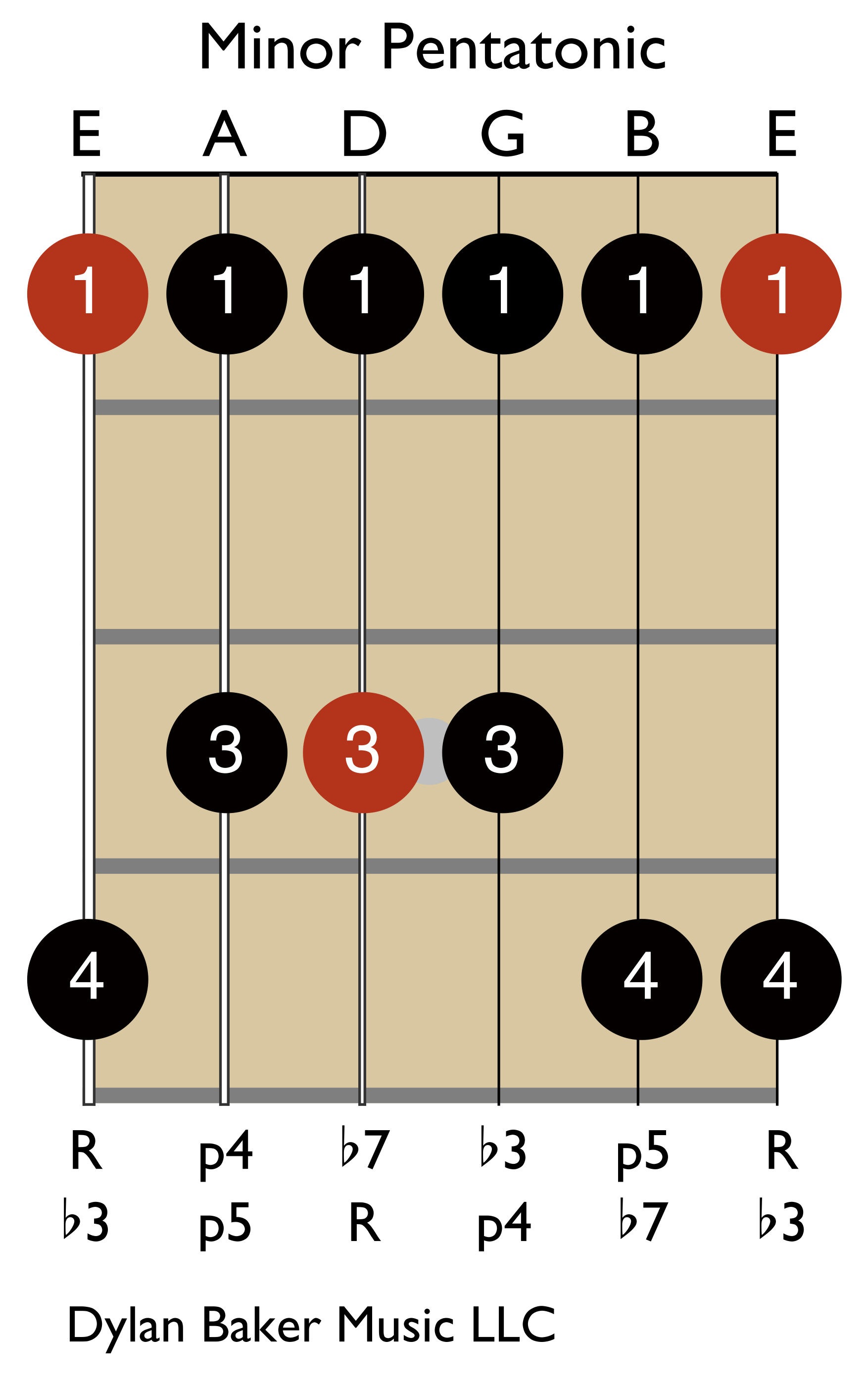Major Pentatonic Scale: R, 2, 3, 5, 6
Minor Pentatonic Scale: R, b3, 4, 5, b7
Pentatonic Scales
The pentatonic scale is an excellent scale to begin learning and improvising with on the guitar. As the name of the scale implies, the pentatonic scale is a five note scale. Keep in mind, it's five notes total within the octave, not the total number of notes (or dots) you are looking at in the diagram.
The pentatonic scale is used in essentially every genre of music there is, however, it's used extensively in blues and rock music. Due to the guitar being a "shape-oriented" instrument, most beginning guitar players will memorize the pentatonic scales first as there are fewer notes to memorize from the scale diagram. Please note that the traditional seven-note major and minor scales are also used frequently with most guitar players, however, the pentatonic provides a "hollow" sound that allows it to be used in many different genres.
Pentatonic scales, or most scales for that matter, can be either major or minor in tonality. As you can tell from both scale diagrams, one pentatonic scale is major and the other scale is minor. Even though you are playing the same grouping of notes, you can play two different pentatonic scales within memorizing one fingering pattern. To play a major pentatonic scale, you simply target your root note from your pinky finger, or fourth finger in guitar terminology. To play a minor pentatonic scale, you target your root note with your index finger or first finger.
I recommend memorizing this scale pattern first by starting from your lowest pitched root note (major or minor) and ascending up the neck until you have played every note within the scale fingering pattern. Once you have reached the highest note in the scale, descend to your lowest pitched note and resolve back to your root note (major or minor.) If you are looking to really *impress your friends and family* (Please read note below,) you can memorize the scale degrees of both major and minor pentatonic. The major pentatonic consists of the Root, 2nd, 3rd, 5th and 6th scale degrees of a major scale, omitting the 4th and 7th from a major scale. The minor pentatonic scale consists of the Root, flat 3rd, 4th, 5th and flat 7th of the key, omitting the 2nd and flat 6th of natural minor.
To apply these pentatonic scales in a basic sense, you must know the key you are playing in, if you are in a major key, you should play a major pentatonic scale, if you are in a minor key, use a minor pentatonic scale. There are exceptions to this method of utilizing these pentatonic scales in this manner, however, this is a great starting point for any player. Your private lesson instructor will be able to provide you with additional possibilities to creatively use these scales. If you would like to learn more about guitar and take your skill level to a more advanced level, please contact us!
*Please note the above information may or may not impress your friends and family. Dylan Baker Music is not liable for any eye rolls or shaking heads you may experience as you demonstrate your amazing knowledge of music theory. However, Dylan Baker Music is liable for any congratulatory remarks or standing ovations you may experience when demonstrating your knowledge of music theory and scale demonstrations.*


